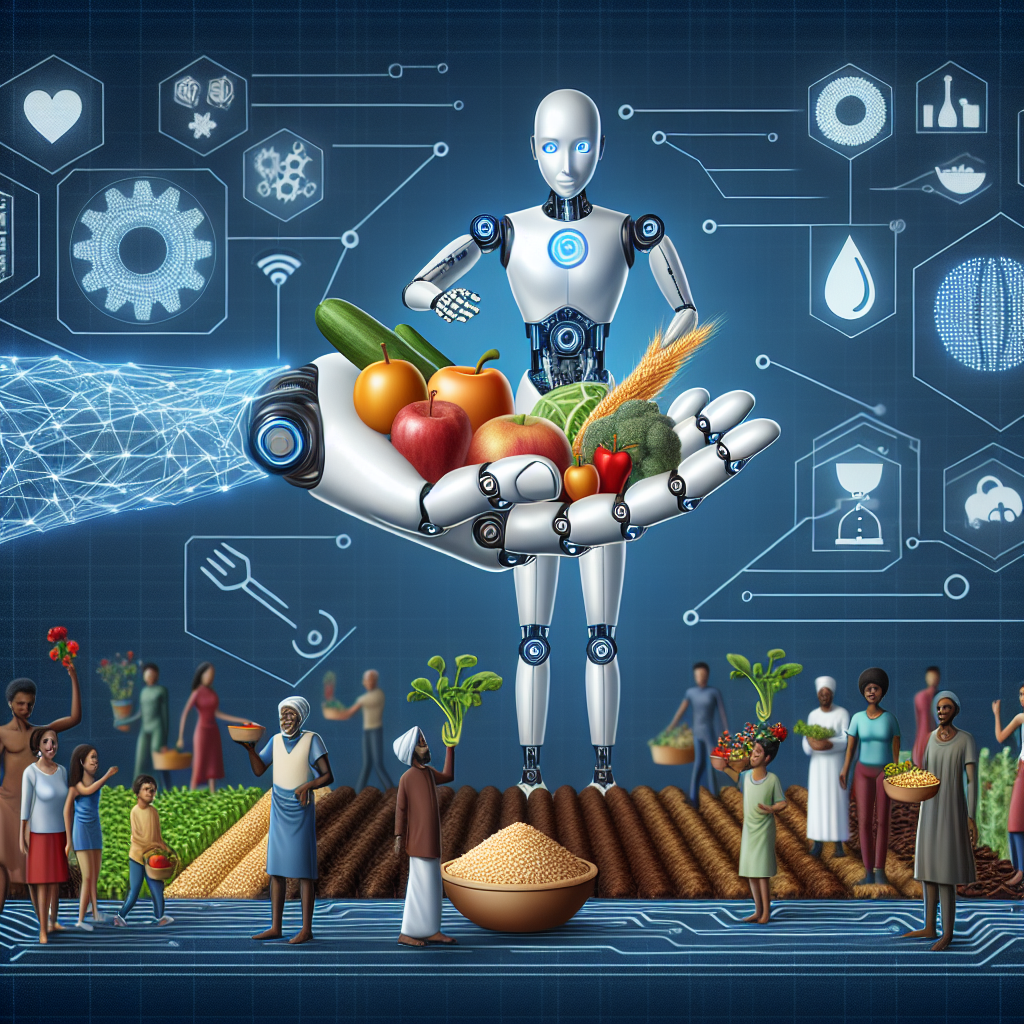The Potential of AI in Addressing Food Insecurity and Hunger through Philanthropy
Food insecurity and hunger are prevalent issues that affect millions of people around the world. According to the United Nations, over 820 million people suffer from chronic undernourishment, with the majority living in developing countries. In addition, the COVID-19 pandemic has exacerbated food insecurity, with an estimated 135 million people facing acute food insecurity in 2020.
Philanthropy has long been a driving force in addressing food insecurity and hunger. From providing food aid to implementing sustainable agricultural practices, philanthropic organizations play a crucial role in alleviating hunger and malnutrition. With the advent of artificial intelligence (AI), there is now a new tool that can be leveraged to address these pressing issues in a more efficient and effective manner.
AI has the potential to revolutionize the way we tackle food insecurity and hunger by providing innovative solutions that can optimize food production, distribution, and access. By harnessing the power of AI, philanthropic organizations can improve the efficiency of their operations, increase the impact of their interventions, and ultimately help more people in need.
One of the key ways AI can be utilized in addressing food insecurity and hunger is through precision agriculture. Precision agriculture involves using data-driven technologies, such as sensors, drones, and AI algorithms, to optimize farming practices and increase crop yields. By analyzing data on soil quality, weather patterns, and crop health, AI can help farmers make more informed decisions that can improve their productivity and profitability.
For example, AI-powered drones can be used to monitor crop growth and detect signs of pests or diseases early on, allowing farmers to take corrective action before their crops are damaged. Similarly, AI algorithms can analyze satellite imagery to identify areas of land that are suitable for agriculture, helping farmers maximize their use of arable land and increase their yields.
In addition to precision agriculture, AI can also be used to improve the efficiency of food distribution and access. By analyzing data on supply chains, market demand, and consumer preferences, AI algorithms can help food banks and aid organizations better predict and meet the needs of vulnerable populations. This can lead to more timely and targeted food aid distribution, reducing waste and ensuring that food reaches those who need it most.
Furthermore, AI-powered mobile apps can be used to connect food insecure individuals with resources and support services in their communities. These apps can provide information on local food banks, soup kitchens, and other sources of food assistance, making it easier for people to access the help they need. In addition, AI chatbots can be used to provide personalized nutrition advice and meal planning tips to help individuals make healthier food choices on a limited budget.
Overall, the potential of AI in addressing food insecurity and hunger through philanthropy is vast. By leveraging AI technologies, philanthropic organizations can enhance their impact and reach more people in need. However, it is important to ensure that AI solutions are developed and implemented in a responsible and ethical manner, taking into account the unique needs and challenges faced by vulnerable populations.
FAQs
Q: How can AI help improve food production and agriculture practices?
A: AI can help improve food production and agriculture practices by analyzing data on soil quality, weather patterns, and crop health to optimize farming practices and increase crop yields. AI-powered technologies such as drones and sensors can monitor crop growth and detect signs of pests or diseases early on, allowing farmers to take corrective action before their crops are damaged.
Q: How can AI be used to improve food distribution and access?
A: AI can be used to improve food distribution and access by analyzing data on supply chains, market demand, and consumer preferences to help food banks and aid organizations better predict and meet the needs of vulnerable populations. AI-powered mobile apps can also be used to connect food insecure individuals with resources and support services in their communities.
Q: What are some examples of AI technologies that can be used to address food insecurity and hunger?
A: Examples of AI technologies that can be used to address food insecurity and hunger include drones for monitoring crop growth, AI algorithms for analyzing satellite imagery to identify arable land, and mobile apps for connecting food insecure individuals with resources and support services in their communities.
Q: How can philanthropic organizations leverage AI to address food insecurity and hunger?
A: Philanthropic organizations can leverage AI to address food insecurity and hunger by implementing AI-powered solutions that improve the efficiency of their operations, increase the impact of their interventions, and ultimately help more people in need. By harnessing the power of AI, philanthropic organizations can optimize food production, distribution, and access to better serve vulnerable populations.

